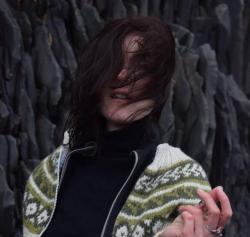
This summer, Vatnajökull National Park was deemed a UNESCO World Heritage Site. In order to determine the suitability of the Vatnajökull property, UNESCO appointed the International Union for Conservation of Nature (IUCN) to perform a technical evaluation of the world heritage nomination, resulting in their approval of the site in July. In addition to the protection afforded a national park, Vatnajökull will now receive periodic international monitoring.
Iceland now holds three UNESCO World Heritage demarcations. The first to receive this designation was the cultural property Þingvellir National Park, which was awarded the notation in 2004. The island of Surtsey, which emerged during submarine volcanic eruptions from 1963 to 1967, received UNESCO World Heritage status as a natural property in 2008.
Unusual size
According to the Environment Agency of Iceland, approximately 22% of the country is under environmental protection. Vatnajökull National Park covers 14% of Iceland, rendering it the largest protected site in the country. The park was established in 2008, and its borders have expanded over the past decade to include new sites of glaciovolcanic activity.
Those familiar with UNESCO sites worldwide will note that it is unusual for such a large part of a country to be deemed a UNESCO site. As outlined in the committee’s full nomination file, the nominated property includes Vatnajökull National Park as well as the adjacent protected areas of Herðubreiðarlindir and Lónsöræfi.

Natural laboratory
“The heart of Iceland really lies in Vatnajökull,” says Hrafnhildur Hannesdóttir, one of four signatories to the UNESCO nomination for Vatnajökull to be deemed a World Heritage Site, and a glaciologist whose PhD research studied the correlation between climate change and the Vatnajökull ice cap. Hrafnhildur’s assertion implies the geologic formation of the island via volcanic activity affiliated with the mantle plume, the physical location of the site which comprises a considerable amount of Iceland’s highlands, and the nation’s cultural relationship with the glacier.
The UNESCO nomination was initiated in 2016 by former Vatnajökull National Park manager Snorri Baldursson. He brought Hrafnhildur on board for her work with Icelandic glaciers. “There are few places on earth where you have this interplay between volcanoes and glaciers,” comments Hrafnhildur. “It is a natural laboratory for studying glacier changes in a warming climate. Lots of research has been carried out on this ice cap; we don’t have many glaciers of this size in the world that have such a long history of research.”
Glacial change
For her PhD research, Hrafnhildur studied ten outlet glaciers, correlating data on how the ice cap’s southern side has advanced and retreated in past centuries. This research was funnelled into modelling work to see how glaciers may respond to a warming climate.
According to Hrafnhildur, her research showed that “the ten glaciers all show signs of retreat, and had their maximum sizes by the end of the 19th century. Depending on the ratio between the accumulation area (above the snowline) and the ablation area (below), their elevation, and if there is a glacial lake, this influences how they respond. It’s not enough to take one glacier and tell the story; you need to look at a selection to get the whole picture.”

Range of support
The designation of the national park as a World Heritage Site gives Hrafnhildur hope for the continued protection of Vatnajökull. “I hope that getting this site on the UNESCO list means we receive more support to build up the infrastructure of the park. In many areas, the park needs more financial support for hiking trails and visitor centres.”
Hrafnhildur knows this from experience, as she worked as a ranger at Askja, Herðubreiðarlindir, and Kverkfjöll in the mid-2000s. At that time, Hrafnhildur participated in her first expeditions onto the Vatnajökull ice cap.
“The Glaciological Society has a weeklong expedition each spring to Grímsvötn,’ she explains. “Since 2004, I have joined them irregularly. This was my first real connection to the ice cap, and this led me to study glaciology.”
Ice met
Hrafnhildur works at the Icelandic Meteorological Office (IMO), where she conducts data-gathering of outlet glaciers’ fluctuation by involving voluntary citizen scientists through the Icelandic Glaciological Society. They visit approximately forty glaciers annually to measure them and share the measurements with an international database on glacial changes.
Additionally, there is a dataset in progress to outline Icelandic glaciers from the 1890s until now, in order to map an aerial view of the glacier masses over the years. Hrafnhildur hopes this will be included in the next Intergovernmental Panel on Climate Change report.
Flowing channels
Due to glacial melt and volcanic eruptions, the UNESCO property will no doubt undergo significant transformation in the coming decades. Hrafnhildur notes that “it’s a very dynamic area with floods and eruptions, so of course that will influence the landscape.
“The boundary of the park on the southern side is in most places based on the outline of the glaciers in 1998. Even though the glaciers are retreating, the boundary will remain stationary in some sense.”
The only foreseeable change to the World Heritage property could come via inclusion of additional protected sites. The IUCN advisory committee noted that there are tentative UNESCO World Heritage Sites proposed from Iceland, including Mývatn and Laxá near Dettifoss, as well as the Torfajökull Volcanic System near the Laki craters. They note these could be considered in future as an extension of the current Vatnajökull property.
As for the UNESCO World Heritage nomination, Hrafnhildur says, “I think my work is done, but we continue with more outreach projects. People working in the tourist industry are really keen on being able to educate their visitors. They’re contacting the IMO and the Institute of Earth Sciences at the University of Iceland asking us to help them with educational signs along the glaciers. I will continue to work both with Vatnajökull National Park and with local tour operators to keep the channels flowing with scientific findings.”
Buy subscriptions, t-shirts and more from our shop right here!

















